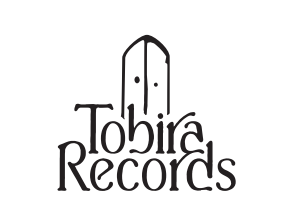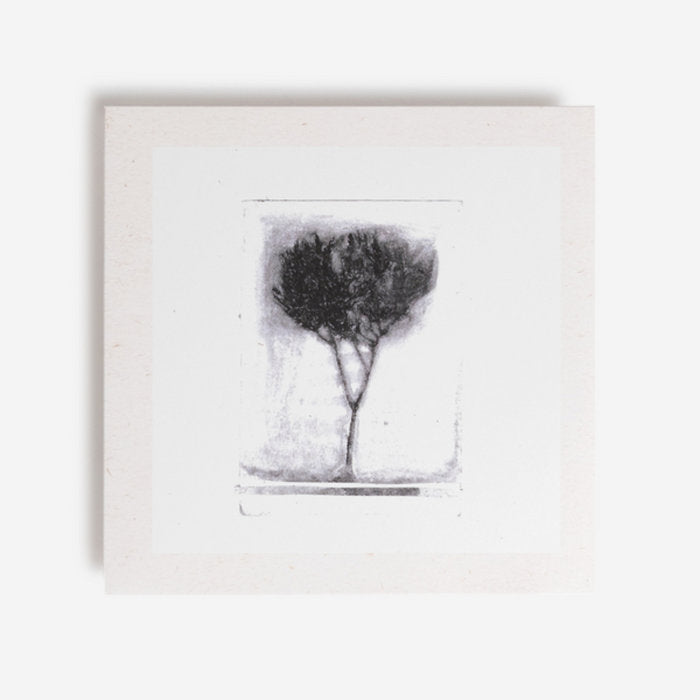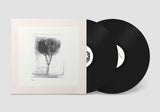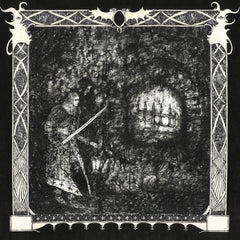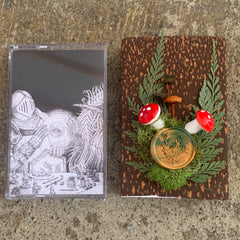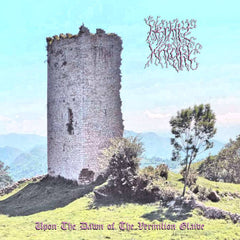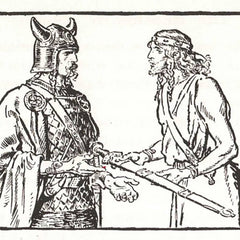Optiki Mousiki // Tomos 2 2xLP
- Availability:
Greek experimental musician Optiki Mousiki aka Costis Drygianakis' 1994 self-released cassette double disc record set.
Contains 4 tracks of psychedelic strange beats and exotic ambient.
Below is a commentary by the label.
"From 1984 to 1987 the Greek artistWith Costis Drygianakis and a hodgepodge of friends and collaborators, he made numerous recordings under the name Optiki Mousiki. His first full-length album, Tomos 1987, released in 1, chronicled his early prolific period, mixing elements of grizzly industrial noise with dizzying electroacoustic experiments and wild instrumental stings. are combined. Released in 1994, Tomos 2 explored not only his own music, but also how avant-garde art works in general.The announcement came after Drygianakis did a lengthy self-examination.A stark departure from its predecessor, the album questions the notion of popular taste, folding "non-serious" musical ideas with traditional elements to explore the life of Christian saints, Tibetan Buddhism, Sufism, and more. It attempts to tentatively quote from the spiritual world near and far, even to Hindu tales.
Drygianakis began the process by recording performances by co-stars such as Sokratis Sinopoulos, Kostas Tsianos, Dimitris Yagaz, Ross Daley and Konstantinos Karagounis.He worked as a studio engineer at Larissa, a demanding and financially demanding job.In contrast, his work with Optical Music became more passionate and deeply personal, and the album's production blended his melancholy and frustration with inspiration, impulse, and desire. It ended up living a life of its own, pouring it all into one long track.This project will get you interested in synthesizers and computersThe focus was on electronic music by Drygianakis, so we needed a bridge between the acoustic world and the digital world.It was a revolutionary piece of equipment, the legendary Akai S-1000 sampler.This tool allows Dreygienakis to draw sounds from the full musical spectrum and tailor them to his needs, fusing dreamy, distant sounds with recorded ideas close at hand. did it.
As a result, he successfully draws creative air from his influences, such as Tangerine Dream's "Zeit" and Diamanda Garas' "The Divine Punishment," and signals towards the East without taking root from the West. The result was an album that formed a defiantly unique sonic cloud.In the opening quarter, glorious strings are layered over hiccupping electronic rhythms and sunken synths, while the hypnotic vocals (singing, chanting, speaking) do not overstate the album's religious themes. Imply.In the second part, Drygianakis touches without crossing the boundaries of New Age music, with faint, minimal piano and a serene atmosphere that slowly transitions from acoustic to electronic.The epic, cinematic third chapter features dense instrumental drones, while the fourth and final section combines religious vocal techniques and Balkan string flourishes with searing noises and cacophony. changed into an electro-acoustic wailing,It gives you some of Drygianakis' most destructive processing.
Nearly 30 years later, Tomos 2 sounds almost prophetic.By consciously questioning the logic of world music, new age and avant-garde,Drygianakis managed to craft a story that lives on day after day. "
Labels and other worksplease use this form. ///Click here to see more Heat Crimes releases available at Tobira.
-------------------------------------------
2x12" black vinyl. Includes mini booklet insert.
Heat Crimes:
"Launching a series of co-releases in collaboration with freshly inaugurated Athens label Untag, comes this very special album from 1994 available for the first time on digital and vinyl by Greek composer Costis Drygianakis.
From 1984 until 1987, Greek artist Costis Drygianakis and a ramshackle assembly of friends and collaborators produced a slew of recordings under the name Optiki Mousiki, or Optical Musics. Their first full-length "Tomos 1" was released in 1987 and documented a prolific early period, combining grizzly industrial noise elements with dizzying electro-acoustic experiments and wild instrumental stings. "Tomos 2" is a collection of work taken from the band's second epoch after a brief hiatus; released in 1994, it arrived after a long period of self -reflection from Drygianakis about not only what his own music represented, but what avant-garde art might be useful for in general. A very different album from its predecessor, it attempts to question popular ideas of taste, folding together "non-serious" musical ideas with traditional elements while tentatively drawing from the spiritual world both near and far, from the lives of the Christian saints to tales of Tibetan Buddhism, Sufism and Hinduism.
Drygianakis started the process by recording performances from his collaborators such as Sokratis Sinopoulos, Kostas Tsianos, Dimitris Yiagas, Ross Daly and Konstantinos Karagounis. He had been working as a studio engineer in Larissa but the work had been grueling and the financial side of the business was painful. his work as Optical Musics became more passionate and deeply personal, and the creation of the album took on a life of its own as he channeled his melancholy and frustration into four long tracks that melted together his inspirations, impulses and desires.Since the project was primarily electronic, driven by Drygianakis's interest in synthesizers and computers, there needed to be a bridge between the acoustic world and the digital. That came from a revolutionary piece of gear: the legendary Akai S-1000 sampler. from across the musical spectrum and tailor it to his needs, fusing dreamy, far-off sounds with ideas recorded closer to home.
The result is an album that neatly pulls creative air from its influences - Tangerine Dream's "Zeit" and Diamanda Galas' "The Divine Punishment", for example - and forms it into defiantly unique sonic clouds that signal towards the East without uprooting themselves from the West. The opening quarter layers ornate strings over a hiccuping electronic rhythm and submerged synthesizers, allowing hypnotic vocals - sung, chanted and spoken - to suggest the album's religious themes without overstating it. On the second segment, Drygianakis reduces his sounds to a whisper, with faint, minimal piano and gentle atmospheres that slowly shift from acoustic to electronic, touching the boundaries of new age music without crossing it. Dense instrumental drones characterize the epic, cinematic third chapter, while the fourth and final section offers us Drygianakis' most crushing treatment, burning religious vocal techniques and Balkan string flourishes into searing noise and dissonant electro-acoustic wails.
Listening almost three decades later "Tomos 2" sounds almost prophetic, picking up on themes and concepts that have only become more relevant. By consciously questioning the logic of world music, new age and the avant-garde, Drygianakis managed to formulate a narrative that continues to draw breath with each passing day. "
Artist : Optiki Mousiki
Label: Heat Crimes
Greek experimental musician Optiki Mousiki aka Costis Drygianakis' 1994 self-released cassette double disc record set.
Contains 4 tracks of psychedelic strange beats and exotic ambient.
Below is a commentary by the label.
"From 1984 to 1987 the Greek artistWith Costis Drygianakis and a hodgepodge of friends and collaborators, he made numerous recordings under the name Optiki Mousiki. His first full-length album, Tomos 1987, released in 1, chronicled his early prolific period, mixing elements of grizzly industrial noise with dizzying electroacoustic experiments and wild instrumental stings. are combined. Released in 1994, Tomos 2 explored not only his own music, but also how avant-garde art works in general.The announcement came after Drygianakis did a lengthy self-examination.A stark departure from its predecessor, the album questions the notion of popular taste, folding "non-serious" musical ideas with traditional elements to explore the life of Christian saints, Tibetan Buddhism, Sufism, and more. It attempts to tentatively quote from the spiritual world near and far, even to Hindu tales.
Drygianakis began the process by recording performances by co-stars such as Sokratis Sinopoulos, Kostas Tsianos, Dimitris Yagaz, Ross Daley and Konstantinos Karagounis.He worked as a studio engineer at Larissa, a demanding and financially demanding job.In contrast, his work with Optical Music became more passionate and deeply personal, and the album's production blended his melancholy and frustration with inspiration, impulse, and desire. It ended up living a life of its own, pouring it all into one long track.This project will get you interested in synthesizers and computersThe focus was on electronic music by Drygianakis, so we needed a bridge between the acoustic world and the digital world.It was a revolutionary piece of equipment, the legendary Akai S-1000 sampler.This tool allows Dreygienakis to draw sounds from the full musical spectrum and tailor them to his needs, fusing dreamy, distant sounds with recorded ideas close at hand. did it.
As a result, he successfully draws creative air from his influences, such as Tangerine Dream's "Zeit" and Diamanda Garas' "The Divine Punishment," and signals towards the East without taking root from the West. The result was an album that formed a defiantly unique sonic cloud.In the opening quarter, glorious strings are layered over hiccupping electronic rhythms and sunken synths, while the hypnotic vocals (singing, chanting, speaking) do not overstate the album's religious themes. Imply.In the second part, Drygianakis touches without crossing the boundaries of New Age music, with faint, minimal piano and a serene atmosphere that slowly transitions from acoustic to electronic.The epic, cinematic third chapter features dense instrumental drones, while the fourth and final section combines religious vocal techniques and Balkan string flourishes with searing noises and cacophony. changed into an electro-acoustic wailing,It gives you some of Drygianakis' most destructive processing.
Nearly 30 years later, Tomos 2 sounds almost prophetic.By consciously questioning the logic of world music, new age and avant-garde,Drygianakis managed to craft a story that lives on day after day. "
Labels and other worksplease use this form. ///Click here to see more Heat Crimes releases available at Tobira.
-------------------------------------------
2x12" black vinyl. Includes mini booklet insert.
Heat Crimes:
"Launching a series of co-releases in collaboration with freshly inaugurated Athens label Untag, comes this very special album from 1994 available for the first time on digital and vinyl by Greek composer Costis Drygianakis.
From 1984 until 1987, Greek artist Costis Drygianakis and a ramshackle assembly of friends and collaborators produced a slew of recordings under the name Optiki Mousiki, or Optical Musics. Their first full-length "Tomos 1" was released in 1987 and documented a prolific early period, combining grizzly industrial noise elements with dizzying electro-acoustic experiments and wild instrumental stings. "Tomos 2" is a collection of work taken from the band's second epoch after a brief hiatus; released in 1994, it arrived after a long period of self -reflection from Drygianakis about not only what his own music represented, but what avant-garde art might be useful for in general. A very different album from its predecessor, it attempts to question popular ideas of taste, folding together "non-serious" musical ideas with traditional elements while tentatively drawing from the spiritual world both near and far, from the lives of the Christian saints to tales of Tibetan Buddhism, Sufism and Hinduism.
Drygianakis started the process by recording performances from his collaborators such as Sokratis Sinopoulos, Kostas Tsianos, Dimitris Yiagas, Ross Daly and Konstantinos Karagounis. He had been working as a studio engineer in Larissa but the work had been grueling and the financial side of the business was painful. his work as Optical Musics became more passionate and deeply personal, and the creation of the album took on a life of its own as he channeled his melancholy and frustration into four long tracks that melted together his inspirations, impulses and desires.Since the project was primarily electronic, driven by Drygianakis's interest in synthesizers and computers, there needed to be a bridge between the acoustic world and the digital. That came from a revolutionary piece of gear: the legendary Akai S-1000 sampler. from across the musical spectrum and tailor it to his needs, fusing dreamy, far-off sounds with ideas recorded closer to home.
The result is an album that neatly pulls creative air from its influences - Tangerine Dream's "Zeit" and Diamanda Galas' "The Divine Punishment", for example - and forms it into defiantly unique sonic clouds that signal towards the East without uprooting themselves from the West. The opening quarter layers ornate strings over a hiccuping electronic rhythm and submerged synthesizers, allowing hypnotic vocals - sung, chanted and spoken - to suggest the album's religious themes without overstating it. On the second segment, Drygianakis reduces his sounds to a whisper, with faint, minimal piano and gentle atmospheres that slowly shift from acoustic to electronic, touching the boundaries of new age music without crossing it. Dense instrumental drones characterize the epic, cinematic third chapter, while the fourth and final section offers us Drygianakis' most crushing treatment, burning religious vocal techniques and Balkan string flourishes into searing noise and dissonant electro-acoustic wails.
Listening almost three decades later "Tomos 2" sounds almost prophetic, picking up on themes and concepts that have only become more relevant. By consciously questioning the logic of world music, new age and the avant-garde, Drygianakis managed to formulate a narrative that continues to draw breath with each passing day. "
Artist : Optiki Mousiki
Label: Heat Crimes
